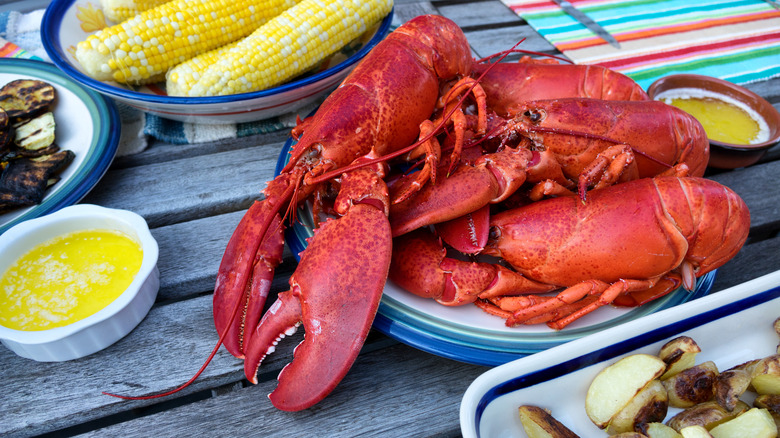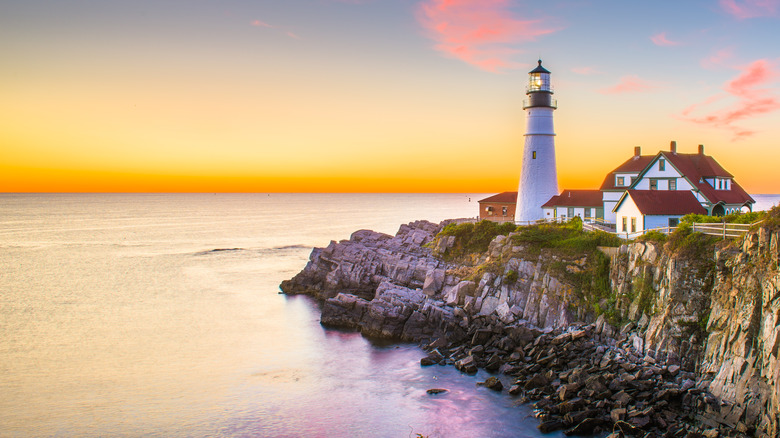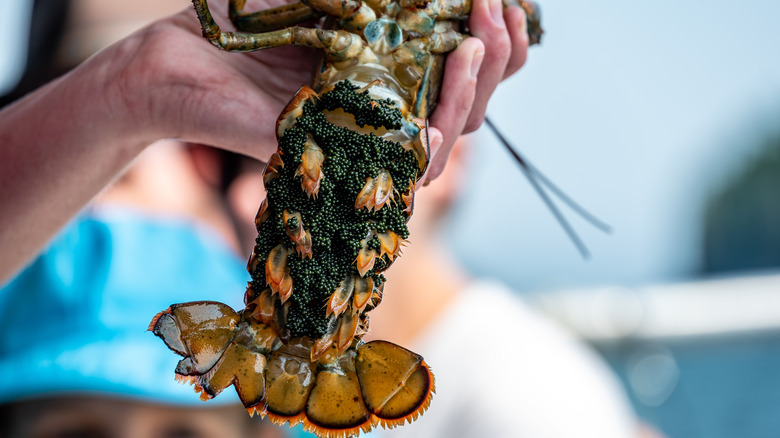Why Maine's Lobster Population Is In Danger
Lobsters are a big deal in Maine — and with good reason. According to CBS, the lobster industry was worth $1.4 billion industry as of December 2021, and is a livelihood source for thousands connected to it in some way.
But fishermen and farmers who have trawled in the waters off Maine for years say things appear to be changing, and maybe not for the better. Due to warming waters, oyster farmer George Dowdle explains, "Twenty-five years ago, this time of year we were getting ready to put everything down for the winter. And by the end of November, at the very latest, we have two inches of ice and we'd be done. Now, I'm fishing right through until January."
Steve Train, who spoke separately with The Economist, has also noticed a shift. Where lobster trapping once meant staying close to shore within the Gulf of Maine and wrapping up work just after noon, Train says he now stays out until closer to 4 p.m. and can no longer predict exactly where the crustaceans might be hanging out. "More of us are hunting all the time," the lobsterman shares.
Temperatures in the Gulf of Maine are rising faster than other oceans around the world
Catching lobsters wasn't always as challenging as it is today. The National Resources Defense Council (NDRC) says that in the three decades between 1984 to 2014, the lobster population grew by as much as 515%, and, by 2011, fishermen were bringing in over 100 million pounds of crustaceans a year. Kristan Porter, head of the Maine Lobsterman's Association acknowledges that climate and geography had everything to do with the decline. Porter says: "The temperature of the Gulf of Maine is creating the right conditions for lobster, so it's helped our industry — and it's been a big boost for the Maine economy. But you never know what lies ahead. If it continues to warm, it may end up going the other way."
And things appear to be going the other way pretty quickly. In a report from 2015, Science says temperatures in the Gulf of Maine "increased faster than 99% of the global ocean" which led to the decline of the Atlantic cod. Because lobsters are happiest when the water registers temperatures ranging from 61 to 64 degrees, lobster stocks are almost sure to decline as temperatures continue to rise. One projection estimates that climate change could cause the Gulf of Maine to lose up to 62% of its lobsters in the next three decades.
Lobstermen have launched their own conservation efforts
Conservation attempts launched by the fishermen themselves could help buy time for Maine's lobster population. They engage in a practice known as "V-notching", where they mark the tails of female lobsters before letting them go. They also throw back lobsters that are either smaller than three and a quarter inches, or bigger than five inches. Chief scientist at the Gulf of Maine Research Institute Andrew Pershing says their practices, which have been in place since the late 19th century, "allowed them [the lobstermen] to take advantage of the boom, and it's going to give them some resiliency to the changes that we think are coming." But all these measures are for naught if the Gulf of Maine's water temperatures go past 70 degrees, which is the point when lobsters start dying (via The New York Times).
Some lobstermen are attempting to head off potential financial hardship by moving into oyster and kelp farming, but they admit it will be tough. University of Prince Edward Island climate professor Adam Fenech has warned that: "The temperatures are going to continue to increase. And some of the industry as we know it, both in aquaculture or other shellfish industries like lobster, they're eventually going to disappear," (via CBS).


